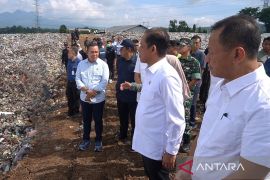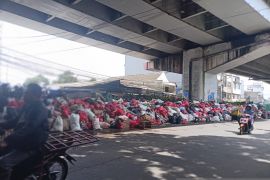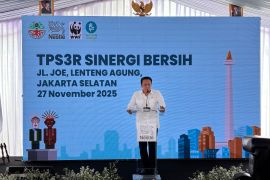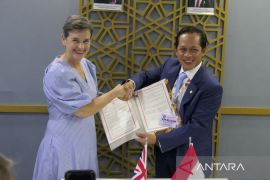Director General of Toxic and Hazardous Waste Management at the Ministry, Rosa Vivien Ratnawati, stated here, Wednesday, that the government continues to work towards realizing the 100-percent waste management target by 2025.
This target is measured through 30-percent waste reduction and 70-percent waste management, she noted at a press conference on 2023 National Waste Awareness Day.
"We develop waste management in the sub-district capital (IKK) to reduce the amount of waste being thrown into landfills," she noted.
The ministry intensively coordinates with the Environmental Fund Management Agency (BPDLH) to support waste management-related funding.
Currently, the budget to manage waste in 514 districts or cities, on average, only reaches 0.51 percent from their total regional budget, as a result of which waste management has not been conducted optimally.
According to the ministry's analysis, every region requires at least three to four percent of their total regional budget to handle waste.
"We plan to have those sub-districts to be supported by funds from BPDLH, but not giving them to sub-districts, but rather to sociopreneurship or non-governmental organizations that manage waste," Ratnawati explained.
"People like them require capital. There will be offtakers, and they will also be given capital. This is what we are currently developing," she noted.
Moreover, she expressed that generation Z and millennials are generations that care the most about the waste problem in Indonesia.
According to Ratnawati, these generations have a lifestyle that makes them sense pride if they can produce less waste.
In fact, these youngsters can also create various waste management-related sociopreneurships in Indonesia.
"I am optimistic that they are much more easier to encourage to help manage and reduce waste," Ratnawati remarked.
The National Waste Management Information System (SIPSN) recorded waste composition based on types wherein food waste had the highest constitution, at 41.9 percent.
This was followed by plant waste comprising wood, twigs, and leaves at 12 percent; paper or cardboard waste, 10.7 percent; plastic waste, 18.7 percent; and other wastes, 6.9 percent.
Meanwhile, waste composition-based sources are still dominated by households, with the figure reaching 37.6 percent; traditional markets, 16.6 percent; and business centers, reaching 22.1 percent.
"Remember, waste is also related to individuals. Where do individuals reside? At the smallest level, they reside in the village and sub-district," Ratnawati highlighted.
Related news: Ministry seeks to increase people's welfare through waste management
Related news: Ministry aims for zero new landfills from 2030
Related news: Lampung promotes reuse and refill system to reduce waste production
Translator: Sugiharto P, Fadhli Ruhman
Editor: Sri Haryati
Copyright © ANTARA 2023












